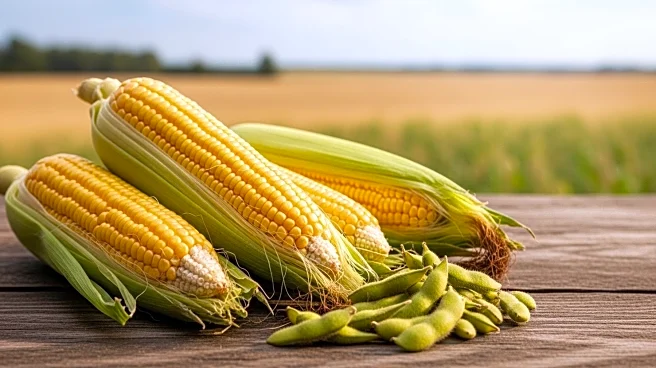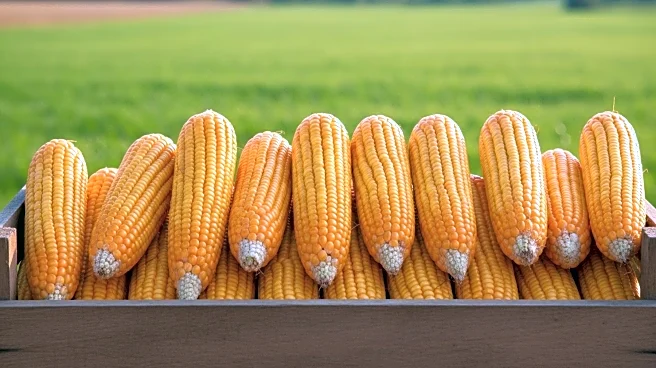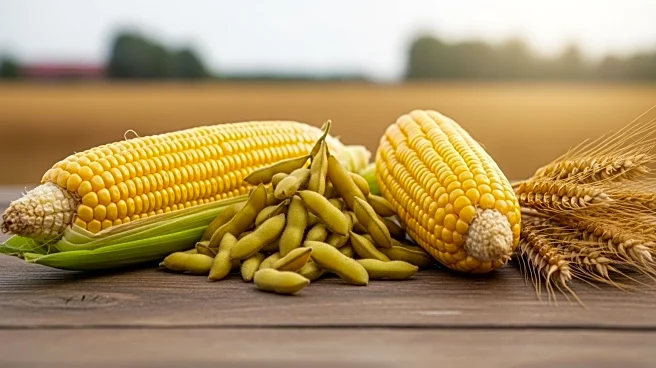What's Happening?
The USDA has released its September 2025 World Agricultural Supply and Demand Estimates (WASDE) report, which shows an increase in U.S. corn and soybean production for the 2025/2026 period. Despite a reduction in yield, the USDA has increased the planted and harvested acres for both crops. Corn production is forecasted at 16.8 billion bushels, with a significant increase in harvested area. Soybean production is projected at 4.3 billion bushels, with higher harvested area offsetting a lower yield. The report also indicates changes in ending stocks, with corn ending stocks slightly lower and soybean ending stocks higher than expected. Wheat ending stocks are pegged lower than anticipated.
Why It's Important?
The USDA's adjustments in crop production estimates have significant implications for U.S. agriculture and global trade. The increase in corn and soybean production could affect market prices and export dynamics, particularly as the U.S. competes with other major producers like Russia, Canada, and Argentina. The changes in ending stocks may influence future trade negotiations and agricultural policy decisions. Farmers and traders will need to monitor these developments closely, as they could impact profitability and market strategies. The report's findings also highlight the importance of adapting to environmental factors, such as southern rust, which can affect yield outcomes.
What's Next?
The USDA's report suggests that further adjustments may be needed in future assessments, particularly concerning corn yield potential affected by southern rust. As harvest results become clearer, the USDA may revise its estimates, impacting global balance sheets for corn. Traders and farmers will likely engage in discussions about the unexpected increase in corn acres, which could influence market trends. The agricultural community will need to stay vigilant in monitoring yield results and export demand, as these factors will play a crucial role in shaping the industry's outlook.












